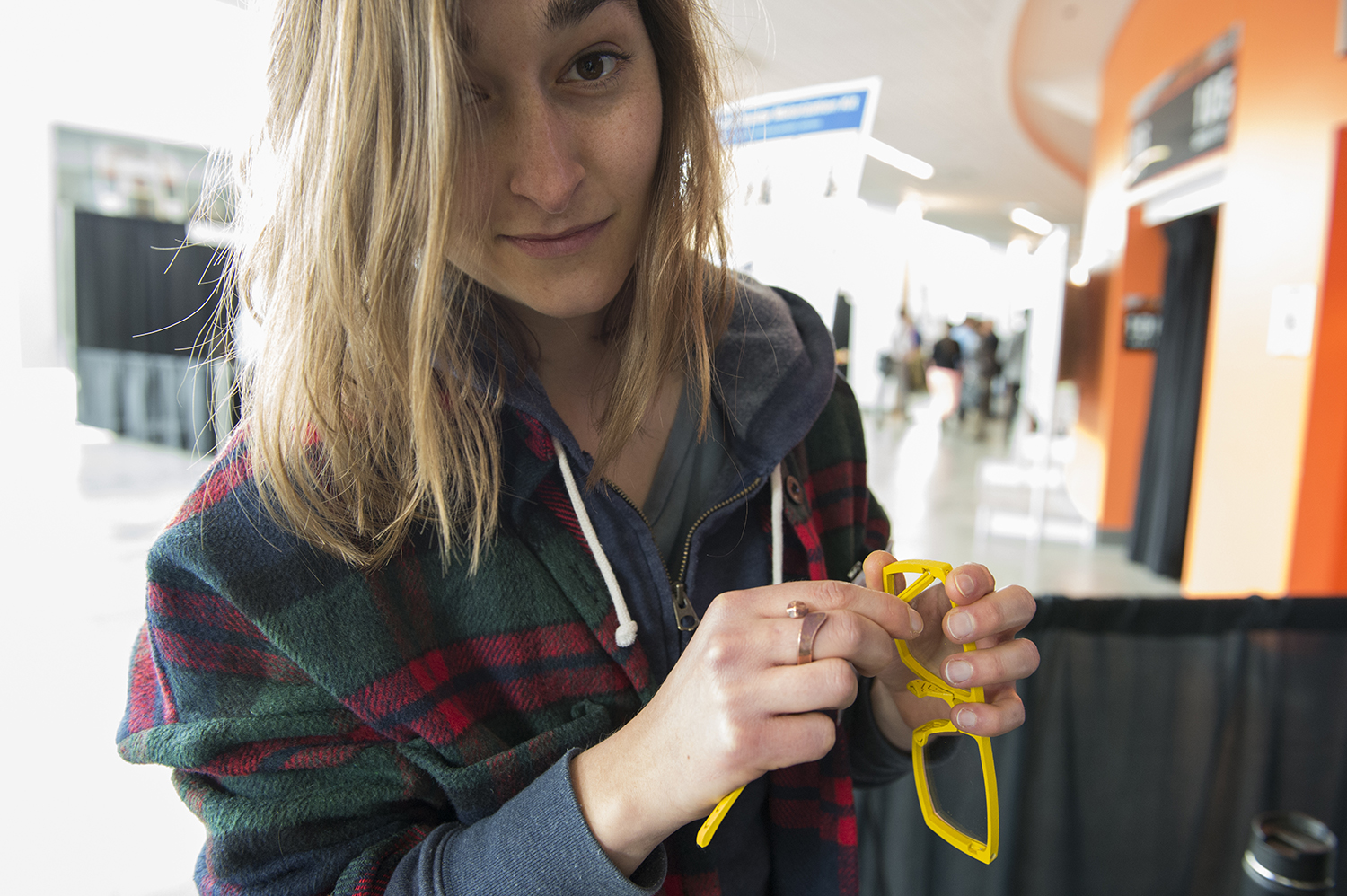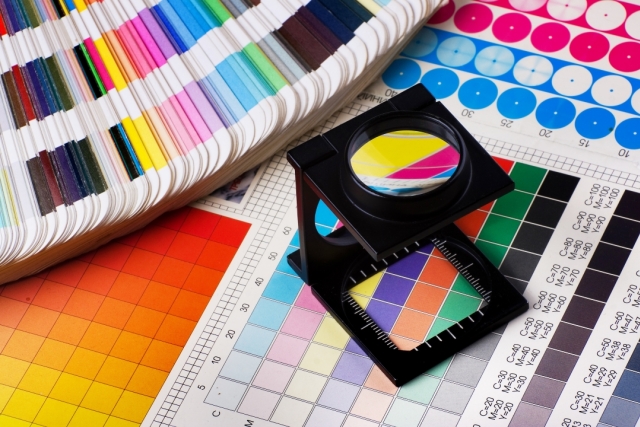With teens’ reluctance to wear glasses, Stegner hopes to have clear solution
RIT Production Services
While teaching middle-school math in Denver, Colo., there was always one thing that frustrated Elizabeth Stegner: a dearth of students wearing eyeglasses, even though many needed them.
“I didn’t know they needed their glasses, or they’d break their glasses and they wouldn’t fix them,” Stegner said. “And it’s nearly impossible to teach somebody the difference between division and addition if they can’t see the board and can’t tell the difference between the division sign and the addition sign.”
Fast forward a couple years and as an RIT industrial design graduate student, Stegner delved deeper into the matter for her thesis project.
Her modular glasses prototype — which was exhibited at the Effective Access Technology Conference April 21 in the Gene Polisseni Center — attacks the issue she experienced first-hand. They’re a possible solution to the troubling matter of teenagers who would benefit from corrective lenses going about their lives without them.

Through research, Stegner discovered plenty of others encountered the same problem she did.
Stegner got consumed by the issue and interviewed numerous kids. She concluded that the eyeglasses American teenagers desire are too expensive, uncomfortable or unstylish, or a combination of all three.
“If glasses aren’t cool and glasses aren’t comfortable, kids just won’t wear them,” Stegner said. “So they need to be affordable, cool and comfortable.”
Stegner identified comfort, adaptability and affordability as her design objectives for her modular glasses.
Individual parts of them — the temples and nosepiece — snap on and off. In the process, Stegner eliminated what she said is the most expensive part of standard glasses, the hinges, using furniture joinery instead.
“They’re actually stronger than typical glasses,” Stegner said.
Stegner made sure the nosepiece is custom fit to achieve maximum comfort, too. With the glasses being thermoplastic, the nosepiece is injection molded and can be shaped around specific noses. It works, in essence, like a mouth guard, as the nosepiece is soaked in hot water to soften before snapping back onto the frames while being worn to form around the nose while it hardens.
The look is customizable, too. On a daily basis, even, since the temples are easily interchangeable and could be purchased separately at a wallet-friendly rate.
“If you’re wearing red, you can have red glasses because you can just pop it in and out,” Stegner said. “You can swap temples with your best friend and be like, ‘Hey, we’re buds.’
“I’ve been trying to be 15,” Stegner added about thinking like her target demographic.
Stegner said this would all be accomplished at a reasonable cost for the consumer — certainly far lower than the hundreds of dollars consistently spent on glasses today.
The glasses can be produced inexpensively via 3D printing or injection molding. The modularity of them also allows for the replacement of low-cost parts rather than the entire pair should damage occur.
How receptive might teenagers be to these glasses?
Stegner has shown prototypes to students at East High School in Rochester — which is home to an optics program — to get their feedback and opinions.
The ability to tailor the frames to their style and size appeals to the kids, Stegner said, as does how well they rest on their faces.
Affordable plus stylish plus comfortable equals a promising remedy to a problem. That’s a math equation that makes clear sense to Stegner.
“Eyeglasses (have turned) from a medical device into a fashionable object,” Stegner said. “Which I think is great, but at the same time they now charge $700, $800 for these things. … Eighty percent of learning is visual, and it’s a problem that should be solved. Glasses are a pretty straightforward thing. We’ve been making them for hundreds of years.”
Stegner’s steadfast pursuit of finding a research-based answer is no surprise. After all, RIT’s heavy focus on access technology and finding holistic solutions are what attracted her to its MFA industrial design program in the first place.
She graduated from Williamette University in Oregon with bachelor’s degrees in biology and studio art before teaching in Denver and ultimately deciding to make the move to RIT.
“It’s been a long process of getting frustrated by all of the Band-Aids we put on problems,” Stegner said. “I think understanding the problem and figuring out how to respond to the problem is better than adding more things. … There are a lot of systemic answers to this problem that need to be addressed, related to healthcare and access to resources.”
Stegner said she still needs to conduct more research in respect the optical side and selling the glasses online-only, which, she believes, might be the best strategy.




